Unveiling the Power of Data: Enhancing Alumni Engagement at Georgia Tech
When Dwight Dozier, the CIO of the Georgia Tech Foundation (GTF), talks about the amount of alumni information his team works with, he likes to compare it to a retail mailing list:
“If I don’t buy anything for five years, I’m off the list. But with Georgia Tech, we rarely hit the delete key. You’re with us from the time you graduate until you’re 100.”
That means there are hundreds of thousands of records that Dozier and his team work with. It’s a difficult undertaking to manage all of this — almost as difficult as it is to extract information from the data that will help advance the Institute. But recently, the GTF’s IT and Data Services made it easier for the teams at Georgia Tech who do just that, specifically regarding data related to alumni engagement.
Alumni engagement is tricky to measure. U.S. News & World Report asks universities to report alumni giving, which until recently fed into their rankings. But according to Kim Bowden, vice president of annual giving and data strategy at the Georgia Tech Alumni Association, those reports never told the whole story regarding engagement.
“First of all, it’s literally not the whole story because U.S. News & World Report counts the number of undergraduate alumni from institutions who are giving each year,” Bowden says. “Clearly for a place like Georgia Tech, that’s an incomplete picture. And also what we know but were not previously able to formally quantify is that there are a lot of other ways alumni are connecting with their alma maters.”
In 2019, the Council for Advancement and Support of Education (CASE), a nonprofit association serving professionals in the field of educational advancement, recognized this, and created an annual survey, known as the Alumni Engagement Metrics (AEM) survey, that would more accurately and fully represent a university’s alumni engagement. The CASE survey defines engagement as “activities that are valued by alumni, build enduring and mutually beneficial relationships, inspire loyalty and financial support, strengthen an institution’s reputation, and involve alumni in meaningful activities to advance the institution’s mission.” The survey invites institutions to measure engagement across four areas: philanthropic (financial support to the university); volunteer (such as serving on a board or serving as a mentor); experiential (attending an event or joining an institutional community); and communication (which includes submitting a class note or commenting on a university’s social media post).
Bowden’s team began gathering this data, starting with the information held by the Georgia Tech Alumni Association, which is what they had the most direct access to. But the process for answering the survey questions was long, not user intuitive, and could produce inaccurate numbers. So they turned to GTF for help.
“We sat with the super smart people at the Foundation, which is always the best people to sit with when you have a problem to solve, and said, ‘Look at this inefficient way we’re doing our homework. We think you can make it better.’”
GTF’s IT and Data Services team created a more streamlined and efficient way to report on a big, messy data set by creating a Power BI dashboard. Now instead of spending hours on the survey, Bowden’s team can now just go to a dashboard and see the numbers that need to be plugged in. It’s a more efficient process and produces a more accurate representation of alumni engagement.
The team has also made it easy for end users to see information regarding individual constituents with a tile in the database on the constituent record that shows their engagement in each of the four modes through the years. So at a glance, users can see someone’s engagement status and how it has changed over time. This helps teams develop specific strategies for engaging alumni.
Moving forward, there’s also interest in ensuring all alumni data is gathered in one spot. Currently, the Georgia Tech Alumni Association uses Blackbaud, a cloud-based customer relationship management system, to store the Institute’s alumni and donor records. But while the alumni association uses this system, schools within Georgia Tech keep their own databases of information which could even includespreadsheets and Word documents. Let’s say an alumna attends a few events hosted by the College of Engineering. The alumni association might not know she is an active alumna if those engagement activities are logged in a different system. GTF wants to change that and is currently piloting a process with the Scheller College of Business and the College of Sciences to upload data to Blackbaud and showcase the benefits of having all this information in a central repository.
But this information is of no help to anyone if it’s not accurate. According to Dozier, the AEM survey has caused a growing focus across campus surrounding data accuracy, getting updated information from constituents, and then maintaining that information. That’s the job of GTF’s IT Constituent Management team. The team is currently using Blackbaud’s data enrichment services to comb through over 700,000 records to ensure that the data is as complete and accurate as possible for end users.
And what does the data tell users like Bowden? For 2024, it showed that one in four alumni are engaged through at least one of the four modes defined by CASE. Bowden and her team are also able to see how three of the engagement modes (volunteer, experiential, and communication) were a pipeline to philanthropy: a percentage of those who mentored a student, attended an event, or sent in a class note also donated to the Institute. Having this information is key to advancing the Institute, as it informs initiatives supporting educational advancement, and helps leaders set goals, assess performance, and make informed strategic decisions.
